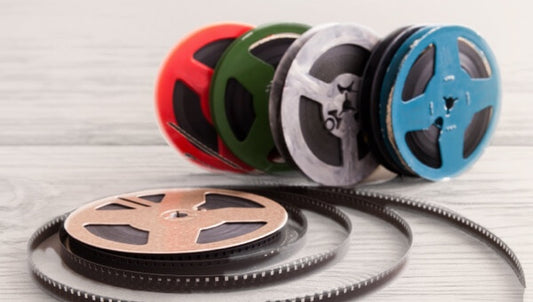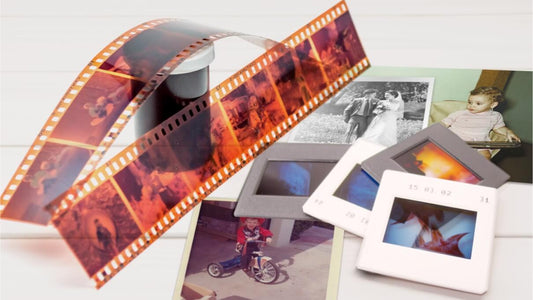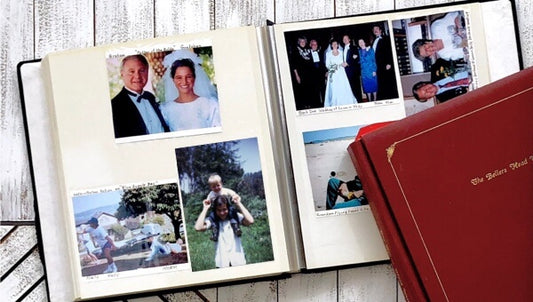Digital files are not immune to damage. Without proper care, your digitized media can degrade, become corrupted, or even disappear. Many people assume that converting old VHS tapes, photos, and slides into digital formats is enough. However, neglecting post-digitization care can lead to lost memories and poor-quality files. Capture provides professional digitization services, but maintaining those digital files requires proper storage, backups, and regular checks. This guide explains how to maintain the quality of your digitized media for years to come.
Why Post-Digitization Care Is Essential
Digital files are not permanent unless stored correctly. Data corruption, accidental deletion, and outdated formats can make files inaccessible. Hard drives fail over time, cloud storage services change policies, and poorly compressed images lose detail. Many people assume their files are safe once digitized, but without regular maintenance, they may disappear.
Benefits of Long-Term Preservation
Ongoing care helps ensure your files stay accessible, high quality, and safely backed up. With the right strategy, you protect not just the data, but the meaning behind it—family memories, cherished milestones, or valuable business records. Proper digital preservation allows these files to remain usable and meaningful for future generations.
Converting photos to digital is only the beginning. To truly preserve it, you need to organize your files, choose reliable storage formats, and create regular backups. That’s what keeps your memories protected, not just today, but for the long haul.
Common Risks of Neglecting Digital Files
Immediately After Digitalization
The first steps you take after digitizing your media can make all the difference. Verifying, naming, and organizing your files right away helps preserve their quality and saves you from frustration down the line.
Verifying File Integrity
Mistakes can happen during digitization - files may be incomplete, corrupted, or mislabeled. Before moving forward:
Play through digitized videos
- Zoom into scanned images to check resolution and clarity
- Open each file to confirm it loads without errors
- Optionally, run a checksum or hash check to verify integrity
Catching issues early means you can fix or redo files while you still have access to the originals.
Naming and Organizing Files
A consistent naming system makes your digital archive easier to search and understand, especially if you’re managing a large collection.
- Use a consistent format – Example: "Family_Reunion_2005_Photo1.jpg" instead of "IMG_0023.jpg."
- Include dates and event names – This helps track when and where the media was captured.
- Avoid special characters – Symbols like "?, *, /" can cause errors in some operating systems.
- Group files into folders – Organize by year, event, or type (e.g., "Vacations," "Birthdays," "Old VHS Tapes").
- Create a master index – A simple text file listing filenames and details can save time later.
This method keeps files accessible and easy to find, reducing the risk of losing important memories.
Use the Right File Formats
The file format you choose plays a big role in how well your digitized media holds up over time. The wrong format can compromise quality, limit compatibility, or make files harder to access in the future.
Each media type has ideal formats for storage:
- JPEG: Widely used for images, but uses compression that can reduce quality
- TIFF: A lossless format that retains full image detail—ideal for archiving
- MP4: Compatible with nearly all devices and platforms, great for everyday video storage
- MOV or AVI: Larger file sizes, but better for preserving high-quality footage
Always save your original files in the highest quality format available. You can create smaller, shareable versions later without compromising your master files.
Best File Formats for Long-Term Storage
Diversify Your Storage Methods
Relying on just one storage location is risky. Combining physical and cloud-based storage adds layers of protection and flexibility.
- External hard drives offer fast, local access
- Cloud storage (e.g., Google Drive, Dropbox) protects against physical damage or device failure
- Archival-grade storage services offer long-term digital preservation with professional support
Using both types together gives you peace of mind and reduces the chances of losing important files due to hardware failure or accidental deletion.
Backup Best Practices: Follow the 3-2-1 Rule
Backing up your files is the most important step in long-term preservation. The 3-2-1 backup rule is a simple and effective strategy:
- 3 total copies of each file
- 2 different types of storage (e.g., hard drive and cloud)
- 1 copy stored offsite, separate from your home or office
This approach ensures that even if one method fails—like a damaged drive or expired cloud subscription—your memories are still secure.
Comparing Backup Options
Regular Maintenance and Checks
Digital storage isn’t set-it-and-forget-it. Here’s what to review every 6–12 months:
- Open a few files to ensure they work
- Check drive health (tools: CrystalDiskInfo, DriveDx)
- Confirm cloud subscriptions are active
- Convert older file formats if support is ending
- Add or update metadata for easier search
Keeping your digital archive up to date is like tuning up a car - it keeps everything running smoothly.
Future-Proofing Your Collection
Technology changes quickly. What works today might not be supported tomorrow. To ensure your digitized media remains accessible, you’ll need to periodically update file types and avoid storing them on outdated platforms.
File formats don’t last forever. As operating systems and software evolve, older formats can become unreadable. To keep your collection safe:
- Convert older files to modern, supported formats regularly
- Monitor updates in digital storage and archiving best practices
- Keep at least one copy of your files in a widely supported format (e.g., MP4, JPEG, PDF)
Staying ahead of obsolescence helps you avoid sudden surprises when trying to access important files years from now.
Avoiding Obsolete Media Platforms
Physical media such as DVDs, CDs, and even some digital file types are already falling out of use. Instead of waiting until it's too late:
- Transfer files from outdated storage (e.g., discs, flash drives, VHS)
- Digitize old video formats (like VHS) as playback devices become scarce
- Store your media on hard drives, cloud storage, or archival services with long-term support
Transferring VHS to digital, for example, is one of the best ways to protect aging recordings before they deteriorate or become unplayable.
Preserving Image and Video Quality
File integrity isn’t just about access - it’s about clarity. Compressed or poorly handled media can lose detail with every edit or save. Preserving the original resolution and using high-quality formats ensures your media looks as good tomorrow as it does today.
How to Avoid Compression Artefacts
Each save in a lossy format like JPEG or MP4 can reduce quality. Here’s how to protect your files:
- Use lossless formats like TIFF or PNG for images and ProRes for videos
- Keep a master file untouched for reference or future edits
- Avoid re-saving compressed files more than necessary
These practices help maintain sharpness, clarity, and detail across generations.
Restoration and Enhancement Tools
Even older or low-quality files can often be improved. Here are tools that can help restore and enhance your media:
- Photoshop – color correction, spot fixes, and overall image cleanup
- Topaz Video Enhance AI – upscale old videos and reduce visual noise
- DaVinci Resolve – advanced video editing and restoration for color and clarity
With the right tools and formats, your memories don’t just survive, they shine.
Security and Access Control
Digital files need protection, not just from loss—but also from unauthorized access. Personal memories, family history, or sensitive documents deserve a secure system.
Protect Sensitive Files
To keep files safe:
- Use password protection or encryption tools like BitLocker or VeraCrypt
- Enable built-in security features in your cloud storage
- Limit device access where backups are stored
Share Files Safely
If you’re sharing with friends or family:
- Use private links in services like Google Drive or Dropbox
- Set file or folder permissions for view-only or limited access
- Avoid public uploads for files you want to control
Protect your digital memories. A few small steps, like encryption and smart sharing, can go a long way in keeping them safe and private.
Long-Term Care for Your Digitized Media
Whether you're converting old home movies or turning slides into digital format, these preservation practices help protect your most meaningful moments - not just for yourself, but for future generations. Maintain the quality of your digitized media by treating it with the same care you gave to the original. A well-managed digital archive is more than storage - it’s a legacy.











